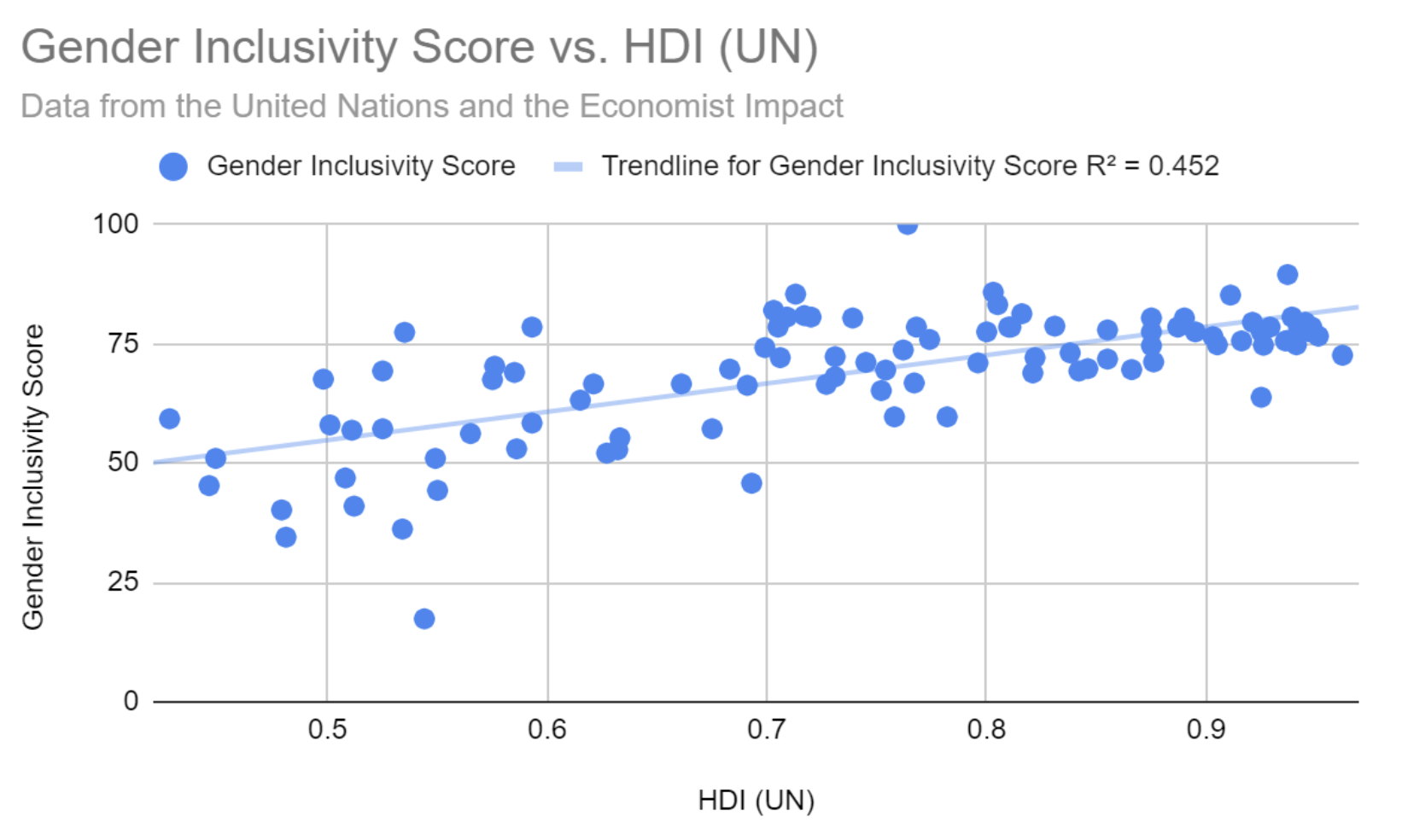If you’re ever looking for proof that technology is accelerating exponentially, consider this: In 2000, only 5 percent of the world’s population used the internet. 5 percent. Your odds of using the internet 23 years ago were just greater than your odds of winning a prize in the Powerball today. Now, in 2023, internet availability is rapidly increasing. In the developed world, many people use the internet nonstop and do not think twice about it. The growth in internet access has profound benefits, and former Pakistani prime minister Benazir Bhutto even declared, “The internet is the great equalizer.”
However, we still lack internet equality worldwide: Believe it or not, only approximately 64 percent of the global population uses the internet. Almost 2.7 billion people don’t shop virtually, skim online news headlines, or post on social media.
Where can we see the most significant inequalities in internet access? Two big answers come out of the data: income and gender disparities. Ultimately, development and investment are the most viable means of addressing both.
Most significantly, UN data suggests that a country’s gross domestic product (GDP) highly influences the level of internet access within its population. The three economic categorizations used by the UN in 2022 (developed economies, economies in transition, and least developed economies) are labeled on the graph below with their corresponding average internet usage.

That the least developed economies have the lowest percentage of internet usage may be expected, considering that a lower GDP corresponds to less money available for infrastructure. Still, the inequality is staggering. On average, only 28 percent of the population in the world’s least developed economies used the internet in 2020, compared to 78 percent in economies in transition and 88 percent in developed economies, respectively.
Beyond income, gender also shapes internet access. According to recent UN estimates, only 63 percent of women in 2022 used the internet compared to 69 percent of men. The gender gap widens in lower-income countries, where 21 percent of women use the internet compared to 32 percent of men.
Since the internet provides a huge repository of information, women’s lack of internet access deepens the education gap in lower-income countries and perpetuates existing gender roles. Moreover, gender inequality in internet access harms economic development, which in turn further perpetuates gender norms. Thus, to fully address the gender disparity in internet access, we must again turn to improvements in the economies of the least developed countries.
Data regarding gender inclusivity in internet access from the Economist Impact and the UN’s Human Development Index (HDI), which is based partly on Gross National Income (GNI) per capita, indicate that the gender gap in internet usage decreases with economic development.

In the above figure, the Economist Impact’s Gender Inclusivity Score for internet access is compared to the UN’s HDI. There is a medium positive correlation between the two, providing some evidence that the gender gap in internet access decreases as countries develop.

Moreover, in the chart above, the Economist Impact’s Gender Inclusivity Score is compared to the UN’s measurement of GNI per capita. The positive trend again similarly suggests that gender inclusivity in internet access increases when the national income of a country increases.
Of course, raising a country’s level of economic income and development is a slow and difficult process. But luckily, a low GDP won’t doom countries with low internet access forever. For example, even though they are on the UN’s list of least developed economies, 59 percent of Djibouti and 53.5 percent of Bhutan used the internet in 2020––compared to the 28 percent average in their economic group. Through targeted investment, organizations such as the International Telecommunication Union (a branch of the UN) are working to lower internet-related costs and install more internet infrastructure. They have noticed that the cost of internet infrastructure is rapidly decreasing as technology advances.
Even so, complete internet installation is still too expensive for many areas. So, both governments and the private sector should prioritize initiatives that offer internet access to the greatest possible number of people.
One highly effective and relatively low-cost solution, for example, is internet kiosks for rural areas. These kiosks can provide an access point to the internet for large groups of people when a more extensive internet infrastructure is too expensive. Microsoft, for example, is successfully improving internet access in rural India through internet kiosks. In 2021, Microsoft had installed enough wireless coverage to reach 1,500 villages and 240,000 registered users. Microsoft should expand this program to provide internet kiosks to rural villages and other companies should implement similar programs to expand internet access.
I acknowledge that countries often must make difficult choices. Prioritizing internet access may come at the expense of health services, for example. There is no easy way to resolve these tradeoffs. However, internet access connects citizens to a global environment and can provide countless benefits and opportunities. Therefore, countries should work to subsidize internet kiosk installation to further expand internet access.
Inequality in internet access is leaving certain populations behind on the virtual world stage. Data suggests that the biggest contributing factor to the lack of internet access is a country’s GDP, which then exacerbates other factors such as gender inequality in internet access. But even countries the UN lists as least developed economies can improve access through relatively low-cost measures such as installing internet kiosks for communities to share. So, the next time that you’re aimlessly scrolling online, think about how immense societal inequalities contribute to vast discrepancies in access to online platforms.
